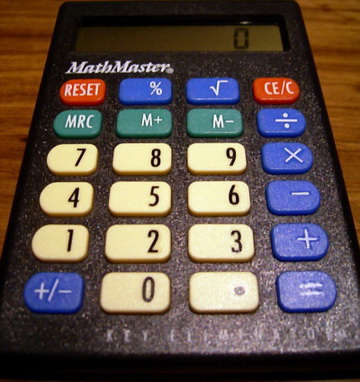Suppose we only had an ordinary calculator. How could we use it to get the correct answer to our calculation?This will lead to discussion of using brackets to avoid confusion in a written calculation and how the memory buttons could be used with the ordinary calculator to break a calculation into smaller parts. Encourage students to think of situations (number stories) where it would be appropriate to use (6 + 3) x 4 and others where it would be appropriate to use 6 + (3 x 4).
Return to Calculating Changes Activities
|



